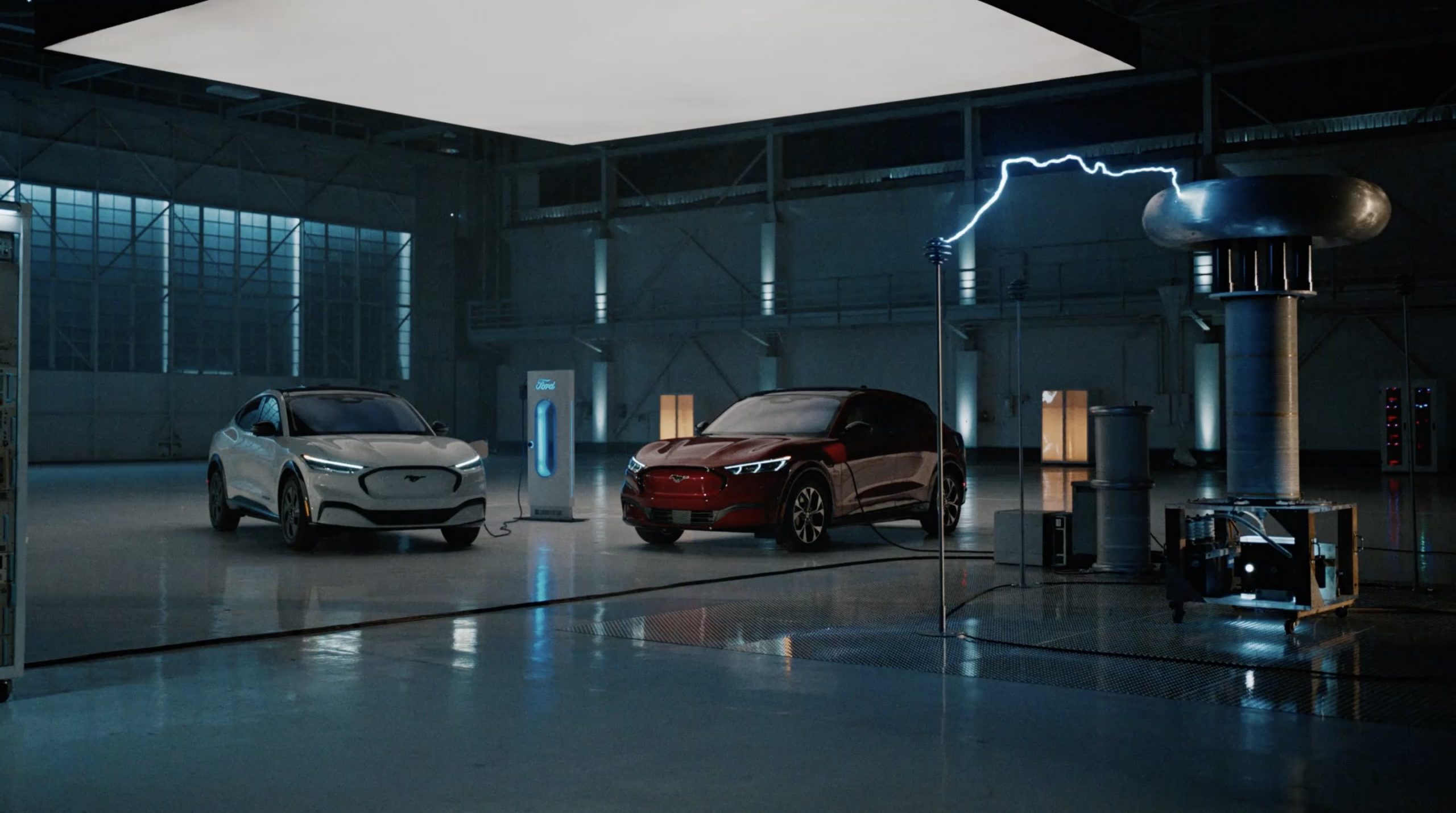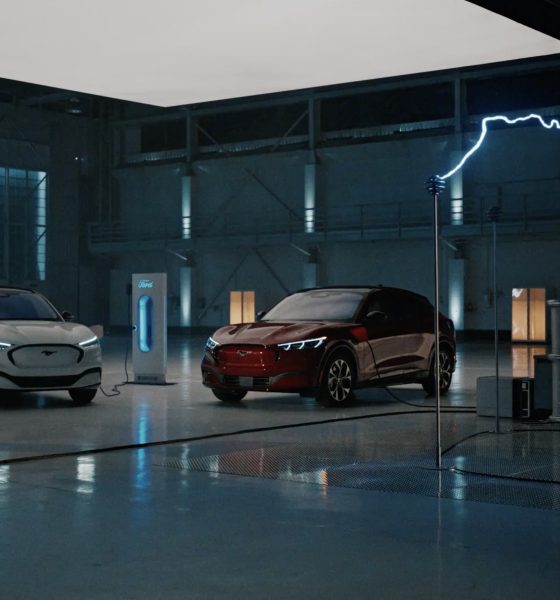Ford is offering Mustang Mach-E reservation holders experiencing delivery delays some unique compensation for their patience. A few Mach-E customers have received and email reportedly sent by Ford claiming that the company will be “providing a $1,000 private offer” and 250 kWh of complimentary fast charging to those affected by the ongoing delivery delays.
Details of the email were shared in the Mach-E Club forum, where a number of customers confirmed receiving the notice from Ford. However, some members of the forum remarked that they received the same email from Ford, but any references to a $1,000 offer were omitted or excluded.
The following is an excerpt from Ford’s email to Mach-E customers.
Thank you for putting your trust in Ford Motor Company and for taking the first step toward an electrified future, with the order of your Mustang Mach-E. We are all so excited to have you as a customer and believe you deserve an excellent shopping and ownership experience.
This is why we want to take a moment to update you on some of the challenges we’ve faced in meeting demand and delivery timing for the Mustang Mach-E. We continue to build and ship vehicles every day, but we’re doing so with a meticulous attention to detail and dedication to quality. Your vehicle timing was impacted by more than one of these quality checks.
We know you are anxious to get driving and experience the 0-60 thrills, zero emissions and more from the Mustang Mach-E. Because we believe that customers should be treated like family, we are providing you a $1000 private offer on your Mustang Mach-E at time of delivery at your Ford dealership. Your dealer is aware of this unique offer. If you have already taken delivery, you can contact Ford at the number listed below to claim this offer. We are also providing you an additional 250 kWh of complimentary DC fast charging on us.
Your Mustang Mach-E comes with 250 kWh and you will have an additional 250 kWh for a total of 500 kWh of complimentary charging at Electrify America fast charging stations on the FordPass Charging Network2.
Please download the FordPass App3, activate your vehicle’s modem and also go online to www.ford.com/connectedservices to activate your two years of complimentary access to the FordPass Charging Network and 500 kWh of fast charging. Once enrolled, your complimentary charging will show up in your account.
The email was signed by Andrew Frick, who is the Vice President of Sales in US and Canada. The Mach-E forum suggests that Ford Mach-e customers who experienced a delivery delay, but have already received their vehicle could still receive the automaker’s $1000 offering and 250kWh of complimentary charging. Those who already have their Mach-E cars are advised to contact Ford directly. The $1,000 offer is valid only through 9/1/2021 for customers who have already received their Mach-E orders.
As for the additional 250 kWh complimentary charging, Ford notes that the incentive would be available in April. It also requires Mach-E owners to have Modem and FordPass Charging Network access to be activated.
The Teslarati team would appreciate hearing from you. If you have any tips, email us at tips@teslarati.com or reach out to me at maria@teslarati.com.

News
Tesla China quietly posts Robotaxi-related job listing
Tesla China is currently seeking a Low Voltage Electrical Engineer to work on circuit board design for the company’s autonomous vehicles.

Tesla has posted a new job listing in Shanghai explicitly tied to its Robotaxi program, fueling speculation that the company is preparing to launch its dedicated autonomous ride-hailing service in China.
As noted in the listing, Tesla China is currently seeking a Low Voltage Electrical Engineer to work on circuit board design for the company’s autonomous vehicles.
Robotaxi-specific role
The listing, which was shared on social media platform X by industry watcher @tslaming, suggested that Tesla China is looking to fill the role urgently. The job listing itself specifically mentions that the person hired for the role will be working on the Low Voltage Hardware team, which would design the circuit boards that would serve as the nervous system of the Robotaxi.
Key tasks for the role, as indicated in the job listing, include collaboration with PCB layout, firmware, mechanical, program management, and validation teams, among other responsibilities. The role is based in Shanghai.
China Robotaxi launch
China represents a massive potential market for robotaxis, with its dense urban centers and supportive policies in select cities. Tesla has limited permission to roll out FSD in the country, though despite this, its vehicles have been hailed as among the best in the market when it comes to autonomous features. So far, at least, it appears that China supports Tesla’s FSD and Robotaxi rollout.
This was hinted at in November, when Tesla brought the Cybercab to the 8th China International Import Expo (CIIE) in Shanghai, marking the first time that the autonomous two-seater was brought to the Asia-Pacific region. The vehicle, despite not having a release date in China, received a significant amount of interest among the event’s attendees.
Elon Musk
Elon Musk and Tesla AI Director share insights after empty driver seat Robotaxi rides
The executives’ unoccupied tests hint at the rapid progress of Tesla’s unsupervised Robotaxi efforts.

Tesla CEO Elon Musk and AI Director Ashok Elluswamy celebrated Christmas Eve by sharing personal experiences with Robotaxi vehicles that had no safety monitor or occupant in the driver’s seat. Musk described the system’s “perfect driving” around Austin, while Elluswamy posted video from the back seat, calling it “an amazing experience.”
The executives’ unoccupied tests hint at the rapid progress of Tesla’s unsupervised Robotaxi efforts.
Elon and Ashok’s firsthand Robotaxi insights
Prior to Musk and the Tesla AI Director’s posts, sightings of unmanned Teslas navigating public roads were widely shared on social media. One such vehicle was spotted in Austin, Texas, which Elon Musk acknowleged by stating that “Testing is underway with no occupants in the car.”
Based on his Christmas Eve post, Musk seemed to have tested an unmanned Tesla himself. “A Tesla with no safety monitor in the car and me sitting in the passenger seat took me all around Austin on Sunday with perfect driving,” Musk wrote in his post.
Elluswamy responded with a 2-minute video showing himself in the rear of an unmanned Tesla. The video featured the vehicle’s empty front seats, as well as its smooth handling through real-world traffic. He captioned his video with the words, “It’s an amazing experience!”
Towards Unsupervised operations
During an xAI Hackathon earlier this month, Elon Musk mentioned that Tesla owed be removing Safety Monitors from its Robotaxis in Austin in just three weeks. “Unsupervised is pretty much solved at this point. So there will be Tesla Robotaxis operating in Austin with no one in them. Not even anyone in the passenger seat in about three weeks,” he said. Musk echoed similar estimates at the 2025 Annual Shareholder Meeting and the Q3 2025 earnings call.
Considering the insights that were posted Musk and Elluswamy, it does appear that Tesla is working hard towards operating its Robotaxis with no safety monitors. This is quite impressive considering that the service was launched just earlier this year.
Elon Musk
Starlink passes 9 million active customers just weeks after hitting 8 million
The milestone highlights the accelerating growth of Starlink, which has now been adding over 20,000 new users per day.

SpaceX’s Starlink satellite internet service has continued its rapid global expansion, surpassing 9 million active customers just weeks after crossing the 8 million mark.
The milestone highlights the accelerating growth of Starlink, which has now been adding over 20,000 new users per day.
9 million customers
In a post on X, SpaceX stated that Starlink now serves over 9 million active users across 155 countries, territories, and markets. The company reached 8 million customers in early November, meaning it added roughly 1 million subscribers in under seven weeks, or about 21,275 new users on average per day.
“Starlink is connecting more than 9M active customers with high-speed internet across 155 countries, territories, and many other markets,” Starlink wrote in a post on its official X account. SpaceX President Gwynne Shotwell also celebrated the milestone on X. “A huge thank you to all of our customers and congrats to the Starlink team for such an incredible product,” she wrote.
That growth rate reflects both rising demand for broadband in underserved regions and Starlink’s expanding satellite constellation, which now includes more than 9,000 low-Earth-orbit satellites designed to deliver high-speed, low-latency internet worldwide.
Starlink’s momentum
Starlink’s momentum has been building up. SpaceX reported 4.6 million Starlink customers in December 2024, followed by 7 million by August 2025, and 8 million customers in November. Independent data also suggests Starlink usage is rising sharply, with Cloudflare reporting that global web traffic from Starlink users more than doubled in 2025, as noted in an Insider report.
Starlink’s momentum is increasingly tied to SpaceX’s broader financial outlook. Elon Musk has said the satellite network is “by far” the company’s largest revenue driver, and reports suggest SpaceX may be positioning itself for an initial public offering as soon as next year, with valuations estimated as high as $1.5 trillion. Musk has also suggested in the past that Starlink could have its own IPO in the future.










